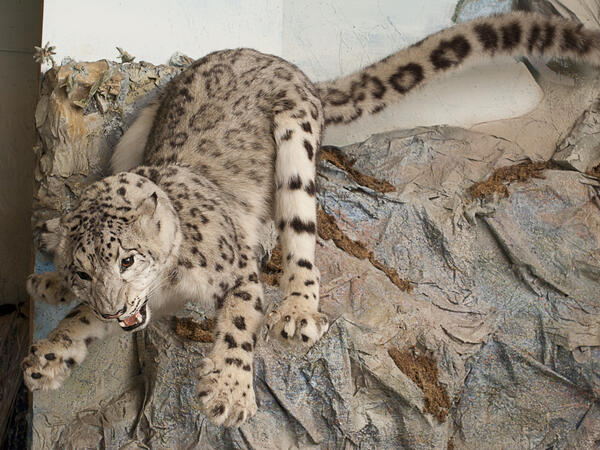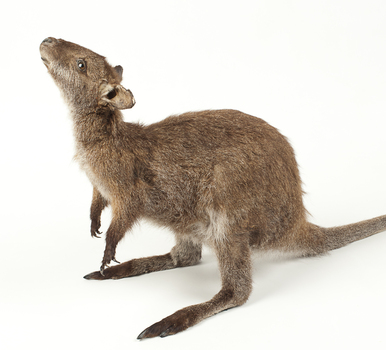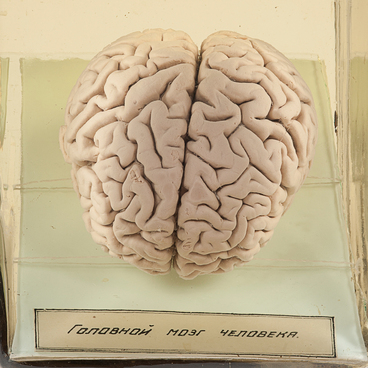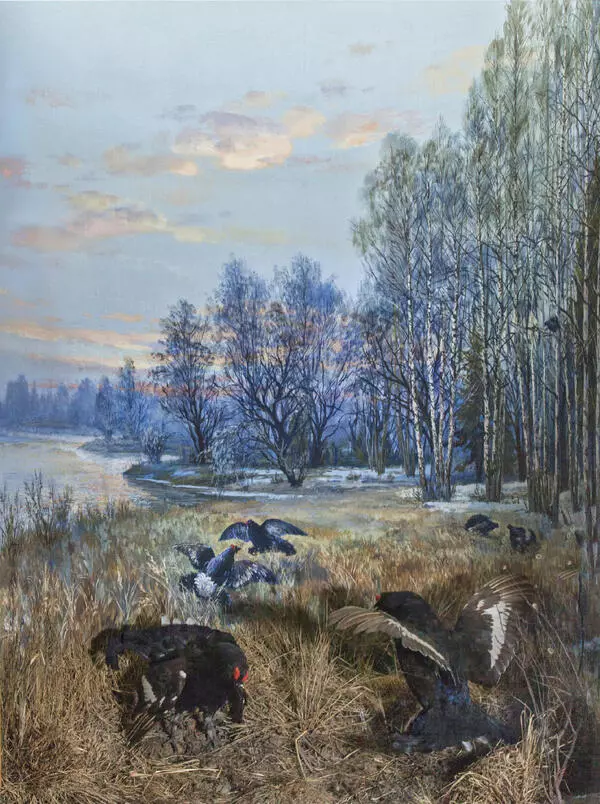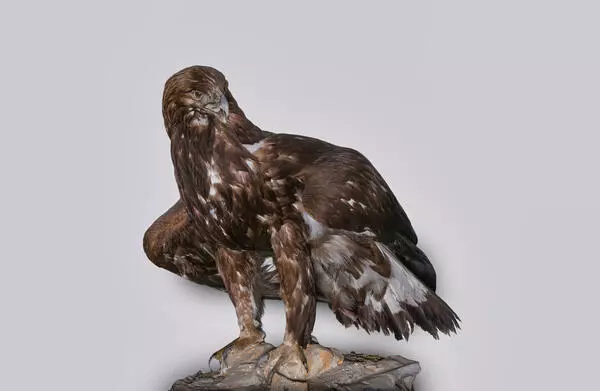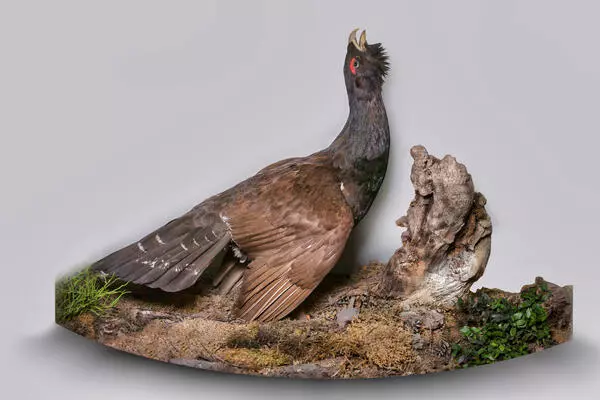In the hall ‘Nature and Man’ there is a stuffed large cat frozen in a jump. This is a snow leopard (Panthera uncia). It lives on the rocky mountain slopes of Central Asia.
The snow leopard has a long flexible body with short legs, thick spotted fur that matches the color of stones and a long fluffy tail that serves as a balancer. The leopard occupies an intermediate position between the big cats of the genus Panthera and the small feline Felinae, and previously it was isolated into a separate species Uncia uncia. Due to the external similarity, the snow leopard was long considered a relative of the leopard, but its genetic relationship with the tiger was revealed and it returned to the Panther genus.
The leopard is active mainly at twilight and at night, during the day it rests in caves, crevices and other secluded places. Sometimes the predator uses large black vulture nests for lying, which reach one and a half meters in diameter.
Despite its ferocious appearance, the snow leopard is not dangerous for humans, its main prey is hoofed animals. The leopard hunts mountain goat, wild sheep, musk deer and other representatives of this group, and if there is a shortage of food, it can try to steal livestock. Previously, during such outings, leopards often died from shooting. These days, this happens extremely rarely: predators avoid meetings with humans.
In Russia, there are no more than 100 individuals per tens of thousands of square kilometers. Sightings of leopards were documented in the republics of Altai, Khakassia, Tyva, Buryatia, in the Altai, Krasnoyarsk and Trans-Baikal territories, in the Irkutsk region. With such a low density, the species is threatened with extinction. The reasons for such a difficult situation for leopards were the low number of ungulates, poaching, human invasion of the predator’s habitat.
The snow leopard is listed in the Red Book of Endangered Species of the Russian Federation and the Red List of the International Union for Conservation of Nature. The Altai, Ubsunur Basin, Sayano-Shushensky, Khakassky nature reserves, Sailyugemsky, Tunkinsky national parks and other specially protected natural territories are engaged in the study and restoration of the snow leopard.
The snow leopard has a long flexible body with short legs, thick spotted fur that matches the color of stones and a long fluffy tail that serves as a balancer. The leopard occupies an intermediate position between the big cats of the genus Panthera and the small feline Felinae, and previously it was isolated into a separate species Uncia uncia. Due to the external similarity, the snow leopard was long considered a relative of the leopard, but its genetic relationship with the tiger was revealed and it returned to the Panther genus.
The leopard is active mainly at twilight and at night, during the day it rests in caves, crevices and other secluded places. Sometimes the predator uses large black vulture nests for lying, which reach one and a half meters in diameter.
Despite its ferocious appearance, the snow leopard is not dangerous for humans, its main prey is hoofed animals. The leopard hunts mountain goat, wild sheep, musk deer and other representatives of this group, and if there is a shortage of food, it can try to steal livestock. Previously, during such outings, leopards often died from shooting. These days, this happens extremely rarely: predators avoid meetings with humans.
According to the latest data, there are from not more than six and a half thousands of these predators scattered over a huge territory in the wild. They are found in Kazakhstan, Kyrgyzstan, Tajikistan, Uzbekistan, Mongolia, China, India, Afghanistan, Pakistan, Bhutan, Nepal.
In Russia, there are no more than 100 individuals per tens of thousands of square kilometers. Sightings of leopards were documented in the republics of Altai, Khakassia, Tyva, Buryatia, in the Altai, Krasnoyarsk and Trans-Baikal territories, in the Irkutsk region. With such a low density, the species is threatened with extinction. The reasons for such a difficult situation for leopards were the low number of ungulates, poaching, human invasion of the predator’s habitat.
The snow leopard is listed in the Red Book of Endangered Species of the Russian Federation and the Red List of the International Union for Conservation of Nature. The Altai, Ubsunur Basin, Sayano-Shushensky, Khakassky nature reserves, Sailyugemsky, Tunkinsky national parks and other specially protected natural territories are engaged in the study and restoration of the snow leopard.
